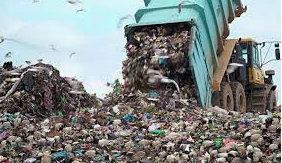It is difficult to describe how badly I wanted to include the terms "Fracking" and "F#####" in that title. But I had a momentary lapse in poor taste, so I went with a tamer choice. Researchers at the Yale School of Public Health did not. They risked ridicule by putting out one of the dumbest papers I've ever seen:
"A Multi-Region Analysis of Shale Drilling Activity and Rates of Sexually Transmitted Infections in the United States" N. Deziel, et. al., Sexually Transmitted Diseases, January 9, 2020 doi: 10.1097/OLQ.0000000000001
And, ridicule they shall have. Not my fault. They practically begged for it.
A. The claim
Here's the premise: The rates of two sexually transmitted infections, gonorrhea, and chlamydia, were found to be 10% and 15%, respectively, higher in Texas counties where fracking took place compared to other counties where fracking wasn't being done.
Is there anything to this? Let's take a look (Hint: Other than a good laugh, no).
The five most common sexually transmitted infections (STIs) in the US are:
- HPV (Human Papillomavirus)
- Chlamydia
- Gonorrhea
- Syphilis
- Herpes
But the paper links only #s 2 and 3 to fracking. What about 1,4, and 5? This discrepancy can be explained in one of two ways:
- Fracking protects people from HPV, syphilis, and herpes.
- The results are a bunch of nonsense.
I vote for #2.
B. What's wrong here?
Plenty.
"In Texas, county-years with high drilling activity had 10% increased rates of chlamydia (RR=1.10; 95% CI=1.04-1.17) and 15% increased rates of gonorrhea (RR=1.15; 95% CI = 1.04-1.28), compared to county-years with no drilling."
How did this ever get published? This paper is pure data dredging. And it's not even good data dredging. In retrospective studies, which are essentially useless on a good day, the minimum relative risk (RR) that is even worth paying any attention to is 2.0. In other words, if the people in fracking areas had double (RR 2.0) the risk of those in non-fracking areas it might be worth paying some attention to the paper. When RRs are 1.1 and 1.15 the study is a joke.
"No statistically significant associations were reported for syphilis..."
There ya go. The authors at least admit but do not explain, that one of the other three STIs had nothing to do with whether people lived in fracking counties, non-fracking counties, or on Neptune. This is another red flag - biological plausibility. There isn't any. If there is really an increase in STIs in fracking areas it would be across the board - not just two infections.
By massaging the data the authors were able to come up with an imaginary correlation between fracking and some STDs but not others. But even this supernaturally low bar was still too high to find a "statistically significant" association with syphilis (or anything else)...

Any more room in there for a paper? Photo: Utilworld
C. It gets worse.
"No statistically significant associations were reported for... STIs in Colorado or North Dakota."
As if this weren't a big enough mess it would seem that we may have to consider another ICD-10 diagnosis code...
A56.8-BS - Sexually transmitted chlamydial infection in states with large numbers of electoral votes.
OK, so if I've got this right, there are 21 states that do fracking. The authors chose three of them and found a delusional "association" in one of these states, but for only two of the most common STDs and no association in the other two states. Sounds reasonable, no?

No.
D. This "study" is an anti-fracking screed. And nothing else.
"Associations between shale drilling and chlamydia and gonorrhea in Texas may reflect increased risk in areas with higher drilling activity and a greater number of major metropolitan areas. Inter-state differences highlight the need for local epidemiology to prioritize community health policies."
Please.




